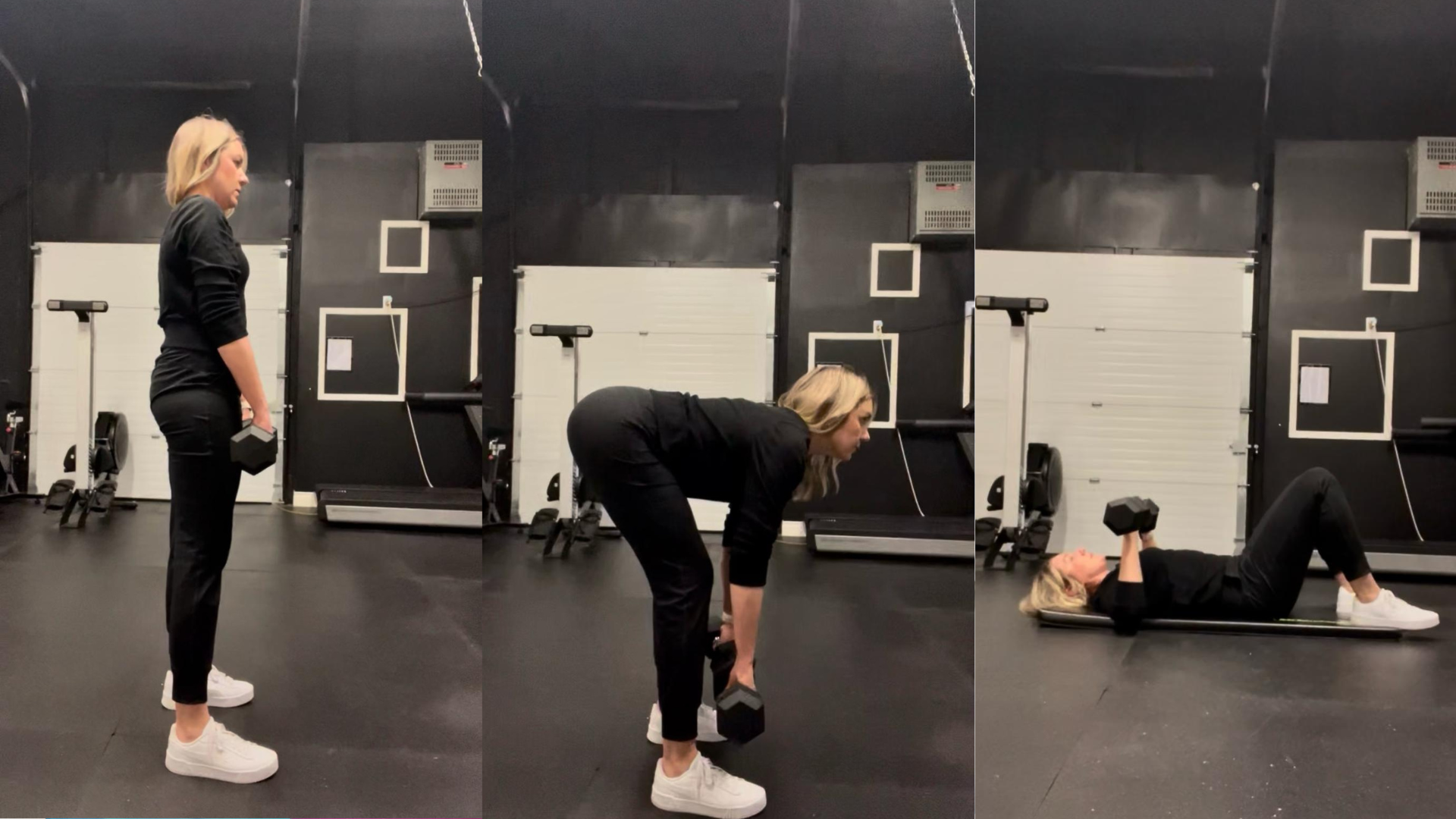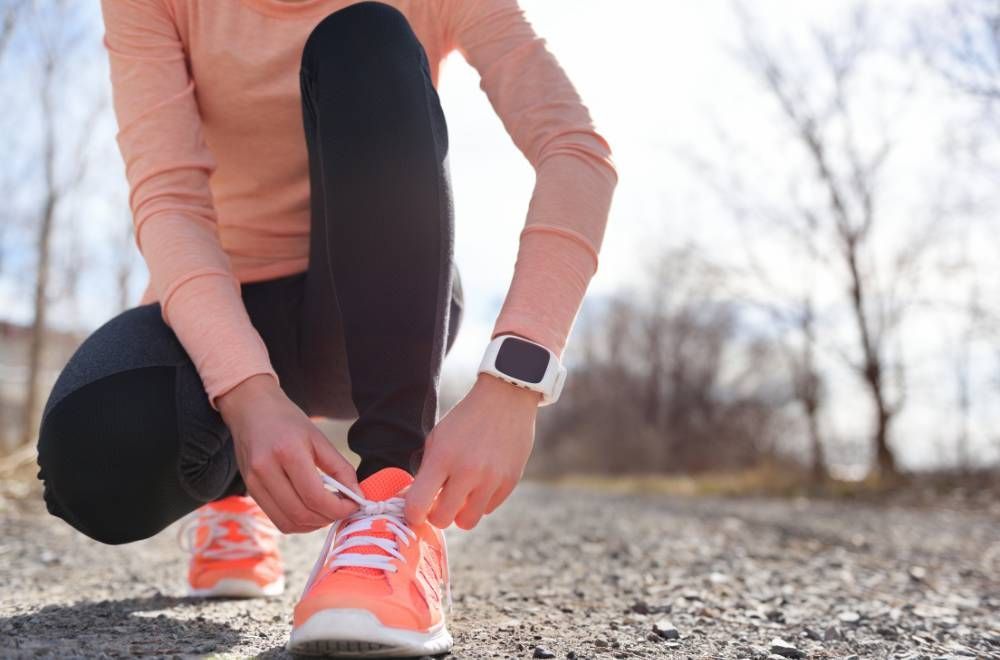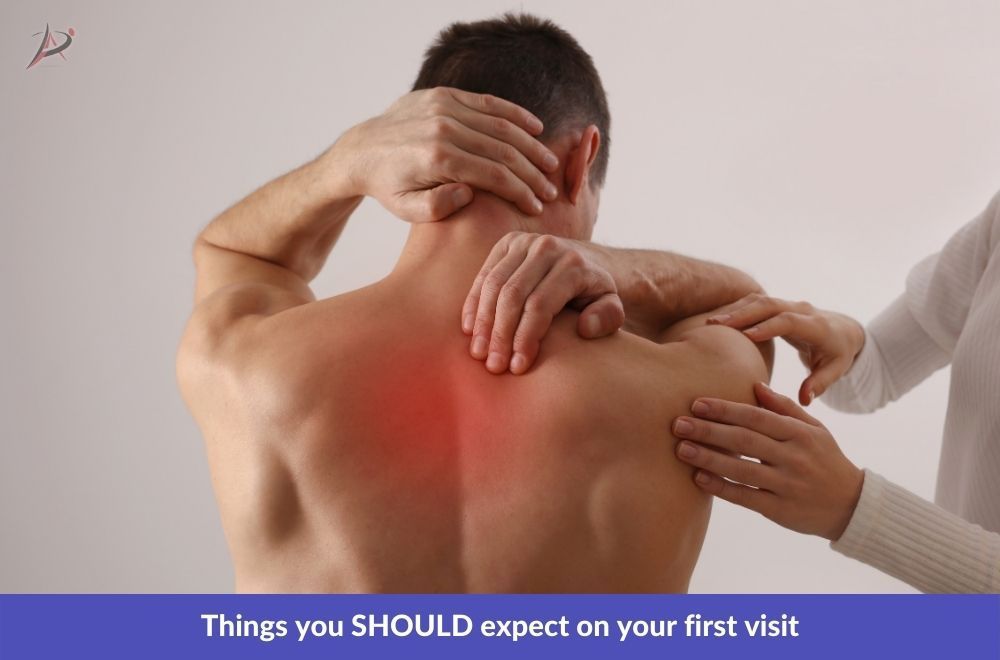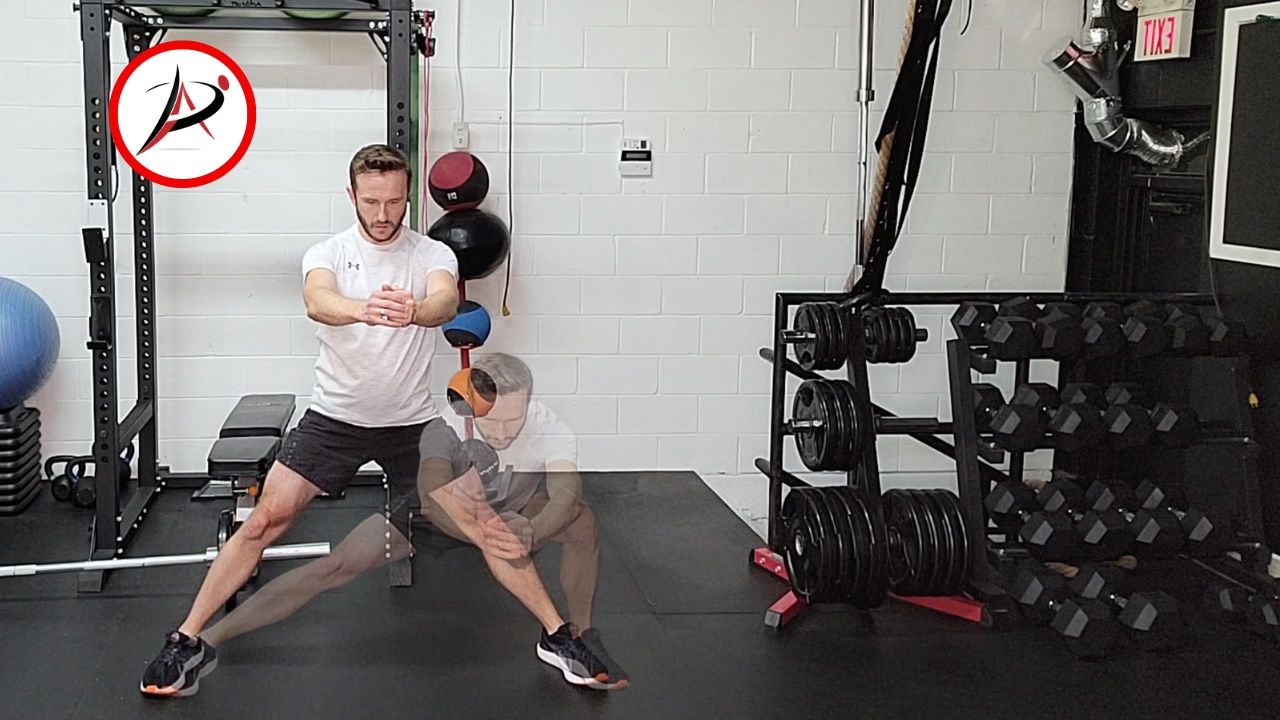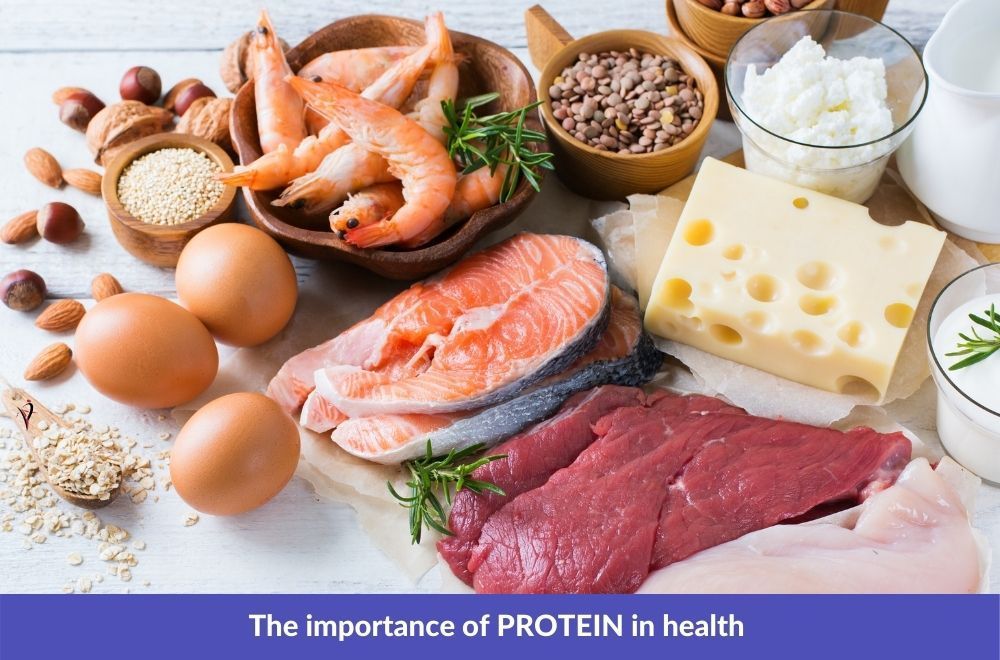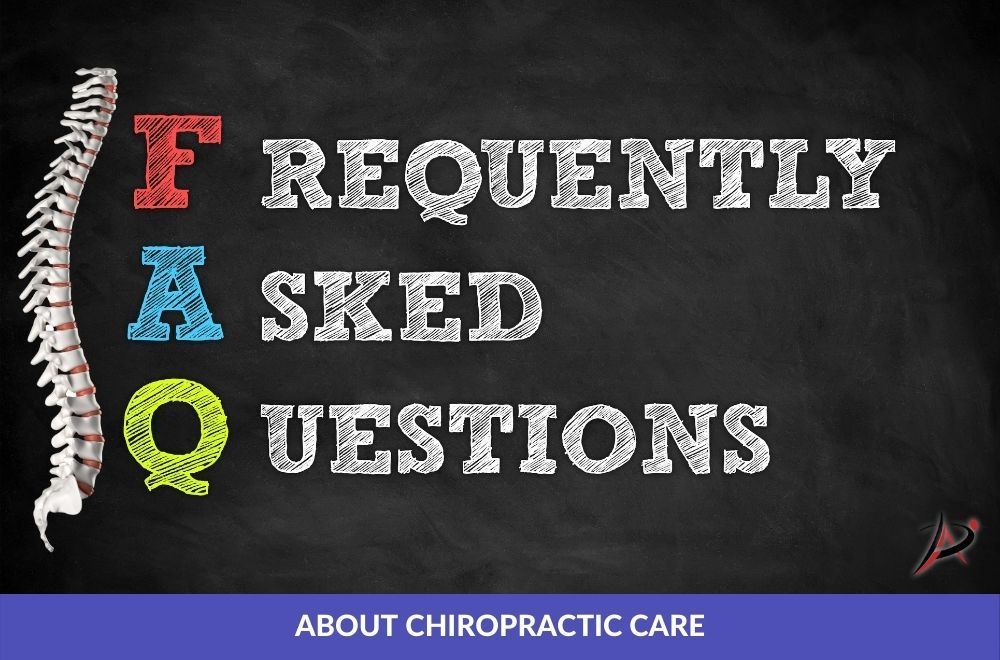Common Cycling Injuries and How to Prevent Them: A Complete Guide
Cycling is a popular sport and an excellent way to stay fit well into old age. Whether you're commuting to work, training for a race, or enjoying a leisurely weekend ride, cycling offers a wide range of physical and mental health benefits. However, like any form of exercise, it also has its risks.
Cyclists frequently experience a range of injuries, both acute and chronic. Gaining a clear understanding of these common cycling-related injuries and how to prevent them is essential for maintaining long-term health and optimal performance.
Before I begin, it’s important to note that the most common injuries sustained by cyclists are acute injuries. These injuries typically result from trauma, such as falling off a bike or colliding with another cyclist, vehicle, or object. In this category, abrasions, bruises, and lacerations are the most frequent. However, more serious injuries like fractures and head trauma (including concussions) also occur.
In this article, I’ll focus on the less frequent but significant types of cycling-related injuries: gradual onset or non-traumatic injuries, also known in healthcare as Repetitive Strain Injuries (RSIs).
Why focus on the less frequent Repetitive Strain Injuries?
These injuries tend to worsen over time, affecting your performance on the bike and sometimes even leading cyclists to give up this form of exercise altogether.
Simply put, treating a bruise or road rash—the most common cycling-related injury—is relatively straightforward. In contrast, RSIs can be much harder to diagnose and manage on your own.
In this comprehensive guide, I’ll introduce you to the most common non-traumatic (Repetitive Strain) injuries affecting cyclists, their specific causes, and prevention strategies to help you enjoy your ride without unnecessary setbacks.
Disclaimer: This article provides general information and is not intended as a substitute for medical advice. If you experience an injury, please consult a licensed healthcare professional for a proper assessment and personalized care.
1. Knee Pain: The most common cycling-related injury
Knee pain is arguably the most common complaint among cyclists, with patellofemoral pain syndrome (PFPS)—often called "cyclist’s knee"—being a frequent diagnosis. This condition typically results from overuse or biomechanical factors affecting the lower limbs. PFPS causes pain at the front of the knee, around the kneecap, and is often worsened by activities like cycling, where repetitive motion (or repetitive strain) is a primary factor. A similar condition, often referred to as “runner’s knee,” affects runners in much the same way.
PFPS is not the only reason cyclists may experience knee pain. Iliotibial Band Syndrome (affecting the outside of the knee), tendonitis (occurring above or below the kneecap), and joint line pain caused by aging joints or an irritated meniscus are also frequent contributors to knee pain among cyclists.
A poor bike fit is a significant contributor to knee pain. If the saddle is too low or is inadequately set back, it increases the stress on the joint, leading to discomfort. Incorrect cleat placement is another important variable to consider.
Additionally, incorrect pedaling techniques and overtraining can exacerbate this issue.
Prevention Strategies:
- Bike Fit: Ensuring that your bike is correctly adjusted to your body and function is one of the best ways to prevent knee pain. The saddle height should allow your knee to be slightly bent at the bottom of the pedal stroke (about 30 to 40 degrees). The saddle set-back also determines the balance of muscle recruitment around your knee and needs to be properly dialed in.
Cleat placement and tilt is another important consideration. The cleat placement needs to be set to complement your natural leg function and optimize alignment. In some cases, wedges and/or shims may need to be installed in between the shoe and the cleat, to minimize strain and improve the efficiency of the pedal stroke. A professional bike fit can help you fine-tune your foot-pedal interface to avoid excess strain on the knee and the surrounding area.
- Strengthening Exercises: Strengthening the muscles around the knee, particularly the quadriceps and glutes, can help make the knee joint resilient to strain.
I know what you’re thinking! Can’t I just strengthen these muscles by doing more cycling? My recommendation to you is to think about different exercise types (i.e.: resistance exercise vs. steady-state endurance exercise) as different medicines. Each medicine has differing results. The work you put in pushing/pulling/lifting heavy weight affects your body differently when compared to spending time peddling on a bike. - Avoid Overtraining: Gradually increase your training intensity and avoid sudden jumps in mileage or power output to reduce the risk of overuse injuries.
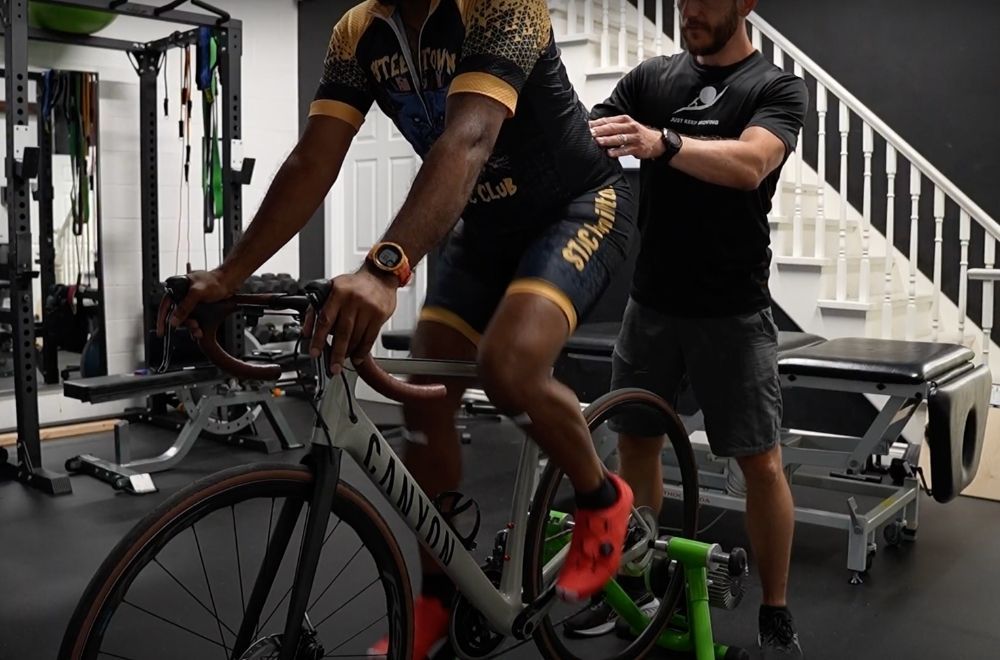
2. Lower Back Pain
Lower back pain is another prevalent issue among cyclists (In my experience, this is a very close second to knee pain). The cycling position naturally involves a prolonged forward lean, which can strain discs, muscles and ligaments of the lower back, especially if you lack core conditioning or if your bike is not fitted correctly.
Many cyclists adopt an overly flexed (rounded) posture, which can lead to mechanical strain
in the spine’s tissues, particularly if the lower back is consistently in a rounded position. The result is often discomfort or pain that can significantly hinder performance and your sustainability on the bike.
Prevention Strategies:
- Core Conditioning Exercise: Building strength and endurance in the muscles that support your spine and torso is essential for maintaining a stable and supportive posture during rides. Exercises like planks, dead bugs, and bird dogs are just a few good examples to start with.
- Hip Mobility: Your mobility in your hips is the most important predictor of how you position your pelvis (and torso) on the bike. If your hip mobility is poor, you will likely adopt a more rounded spine/torso posture while on the bike, and your spine will be less stable throughout the pedal stroke. Get your hips more mobile to alleviate the strain on your lower back!
- Bike Adjustments: Adjusting your bike’s points of contact can alleviate lower back pain. If the handlebars are too low or far from the saddle, it forces you to round your spine/torso, which strains the lower back. Saddle size, shape and placement is also important here. A competent professional bike fitter should be able to assess and recommend specific adjustments based on your body dimensions and mechanics.
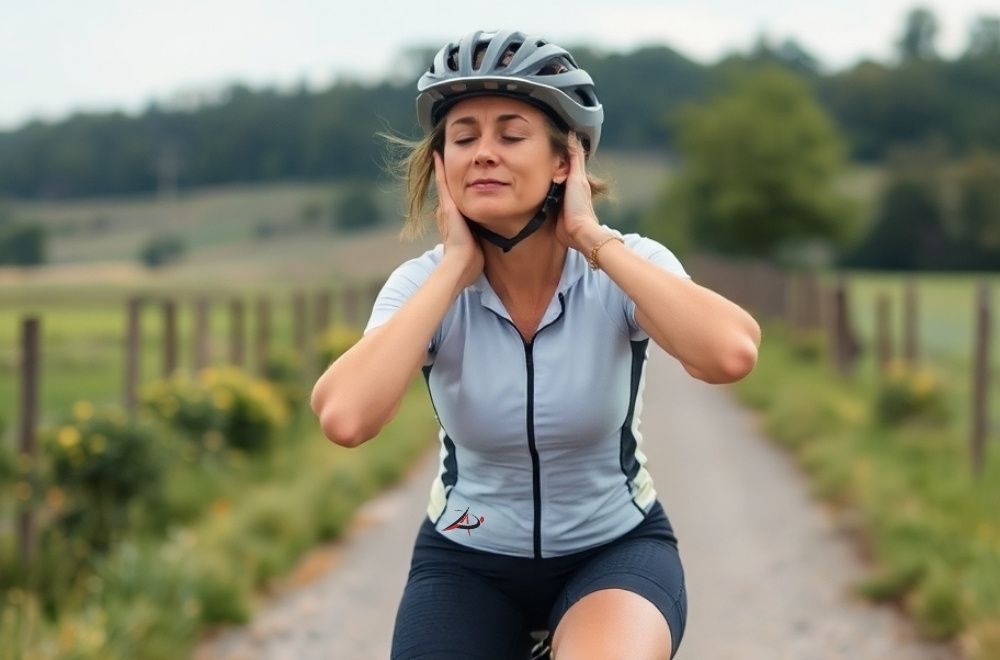
3. Neck and Shoulder Pain
Neck and shoulder pain are commonly reported by cyclists, especially after long rides. This discomfort is usually a result of holding a fixed position on the bike for extended periods, which can lead to muscle tension and fatigue in the neck and upper back. Improper posturing on the bike, such as riding with a rounded torso or hunching over the handlebars, often contributes to this type of pain.
Prevention Strategies:
- Flatten Your Spine:
Riding with a rounded spine forces your shoulder to round and your neck to hyper-extend (Afterall, you still need to look up). This is quite straining on your neck and shoulders.
From your pelvis all the way up to the top of your neck, try to elongate your spine, flattening it in the process. Can you hold a version of this while riding? More often than not, riding with an elongated spine reduces the strain through the neck and shoulders considerably without the need to make any major adjustments to the bike. - Relax Your Shoulders: It’s important to keep your shoulders relaxed on your ribcage to avoid tensing up while riding. Position changes and light stretching during breaks can also help reduce tension.
- Bike Fit: Cycling posture is quite straining on the neck and shoulders. Improper positioning on the bike will limit your ability to flatten your spine and relax your shoulders. Dialing in your positioning on the bike can dramatically reduce upper body strain, making cycling feel like a completely different experience.
It’s true! More often than not, riding on a properly fit bike feels like you are on a completely different bike! - Strength and Flexibility Training: Think of cycling like an endurance event for your legs,
as well as your upper body! You need to hold a straining position for prolonged periods. The more aerodynamic (aggressive) your position, the more strain imposed on your body. Yes, time in the saddle helps improve your ability to maintain these positions. However, the right strength and flexibility program can skyrocket your comfort on the bike and reduce your risk of injury.
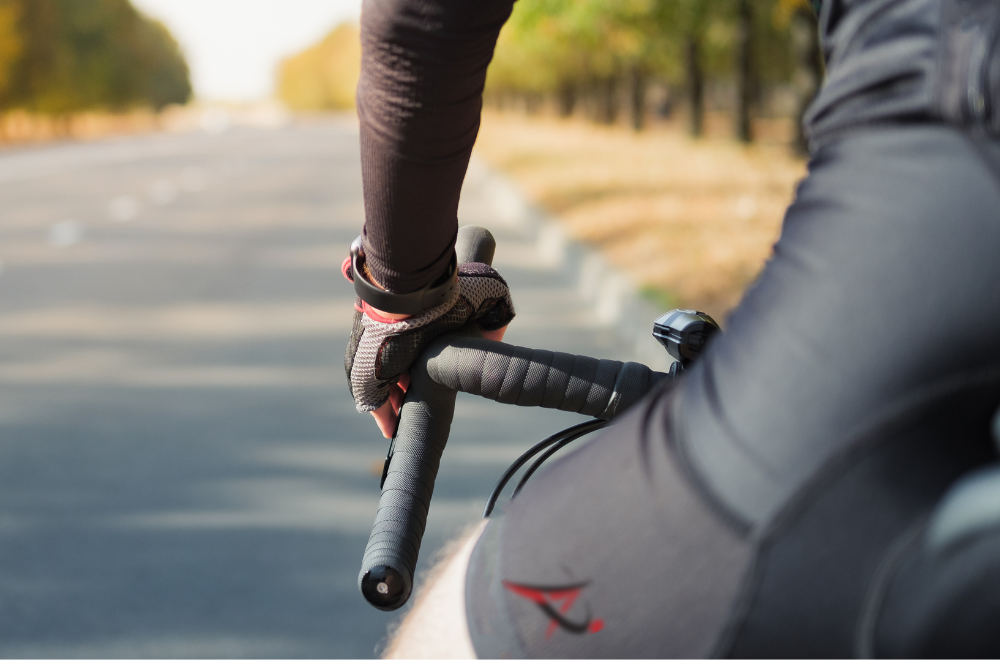
4. Wrist and Hand Numbness/Weakness/Pain
Numbness, weakness and pain in the wrists and hands are most often caused by the compression of either the ulnar or median nerves.
Ulnar nerve compression, often referred to as "handlebar palsy," is a common issue for cyclists. This condition occurs when excessive pressure is placed on the hands, leading to numbness or tingling in the ring and pinky fingers.
Another common issue is
carpal tunnel syndrome, where the median nerve is compressed, causing numbness and pain in the thumb, index, and middle fingers.
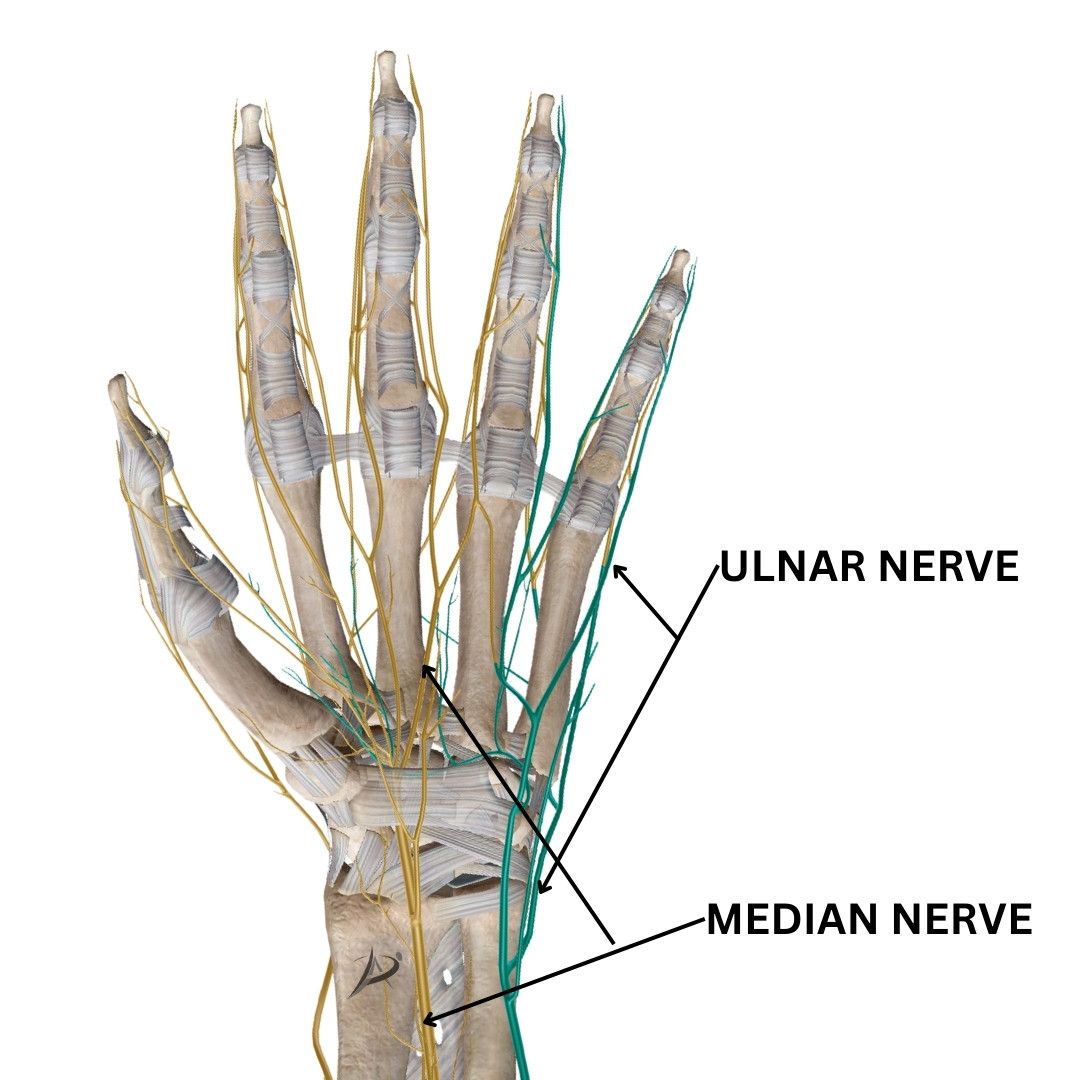
Prevention Strategies:
There are three categories of prevention strategies to consider here.
- Decrease Weight on the Hands: Excessive weight distribution to the hands is a common contributor to nerve compression (and hand discomfort, in general). A properly dialed-in cycling position (fit) places more of the weight on the back half of the bike than the front half. A professional bike fit will help to rebalance the whole body of the bike.
- Decrease Pressure on the Hands: Nerves that cross the wrist and hands do not tolerate prolonged pressure well, especially if that pressure is excessive.
Wearing proper cycling gloves tremendously reduces pressure in the anatomical regions where nerves are most vulnerable. They also help the cyclist grip the bars with ease, reducing excessive gripping which can subsequently lead to more pressure on the nerves.
It is also a good idea to sometimes alternate hand placement on the bars, distributing the pressure to different areas of the hand for a period of time.
Some cyclists, especially those with small diameter bars, will benefit from thicker bar tape which will again help reduce the pressure. Some may even want to double up on the tape!
The tilt of the bars and the positioning of the hoods also dictate how the pressure on the hands is distributed. If nerve injury is suspected, a competent bike fitter should have an idea of which nerve is involved and adjust the bars/hoods appropriately to redistribute the pressure off of the affected nerve.
An excellent example of why searching for a bike fitter who is also a healthcare provider is a good idea. The same applies to the point below: - (Pro Tip!) Consider the Neck: Hand numbness, weakness, and pain can sometimes come from issues in the neck. This should be of no surprise, as the neck is placed in a straining position when you are on the bike, especially when you are in a particularly aggressive (aerodynamic) position.
Consider my above suggestions with regard to “Neck & Shoulder Pain”. Also, consider what you are doing while off of the bike, that may contribute to neck and upper limb symptoms (i.e.: Are you straining over a desk all day?). When in doubt, see a trusted healthcare provider (one that cycles… bonus points if they are also a trained bike fitter) to help you figure this out.

5. Saddle Area Discomfort
Saddle area discomfort encompasses a number of ailments. It includes pain that may be localized to your sit bones or extend forward to the genital area. It may include numbness in the genitals. It may also include wounds, inflamed hair follicles and skin irritation (Saddle Sores). These issues are especially common during long rides or multi-day cycling events.
The general explanation is that all of the above-mentioned saddle area discomforts are usually related to excess rubbing or pressure in focal areas in the perineal region (the anatomical area between your sit bones and your genitals).
Saddle area discomfort should be taken seriously. If left untreated, saddle sores can become infected and require medical attention.Extended pudendal or perineal nerve compression can lead to prolonged genital numbness, pain and potentially even erectile dysfunction.
A poorly fitted saddle, inappropriate cycling shorts, or incorrect riding position are all factors that can increase the risk of developing issues in the saddle area.
Prevention Strategies:
- Bike Fit: Improper positioning (fit) on the bike will impose greater pressure on the saddle and can accentuate movement of the pelvis. This can lead to saddle area discomfort.
The saddle tilt is an important consideration. An improper saddle tilt can force you to sit in the wrong area of the saddle, and/or place pressure in all the wrong areas.
HINT: lowering the nose of the saddle does not always relieve discomfort, and often makes it worse!
The saddle width and shape characteristics are also important to consider. For example, a saddle that is too narrow will increase perineal pressure on the perineum, and will likely lead to excessive pelvic movement while pedaling. Also, a saddle designed with a high point along the centre of the saddle (Don’t ask me why they still make them like this!) will once again contribute to pressure in all the wrong anatomical areas.
I often recommend a saddle that is relatively flat on the top (no central high point), with a sufficient cut-out that is surrounded by soft edges. In my practice, I always have a few NinetyK Line of saddles on hand to try, as they are designed and distributed by actual bike fitters.
Be Warned! No matter how experienced your bike fitter is, and no matter what fancy gadgets they use, no one can perfectly match a specific saddle to your specific anatomy. This includes butt moulds and even pressure sensors.
At the end of the day, sit-bone width measurements may be used as “guides” to help you determine a ballpark saddle width. A proper bike fit is paramount in helping you distribute the pressure on the bike’s touch points, including the saddle. Beyond that, it’s all about trying different saddles to find one that fits you best. - Wear Proper Cycling Shorts: High-quality, padded cycling shorts reduce friction and dampen pressure, helping to prevent saddle area discomfort.
- Use Chamois Cream: Applying chamois cream to areas that experience the most friction can reduce chafing and prevent sores. This is a must on longer rides!
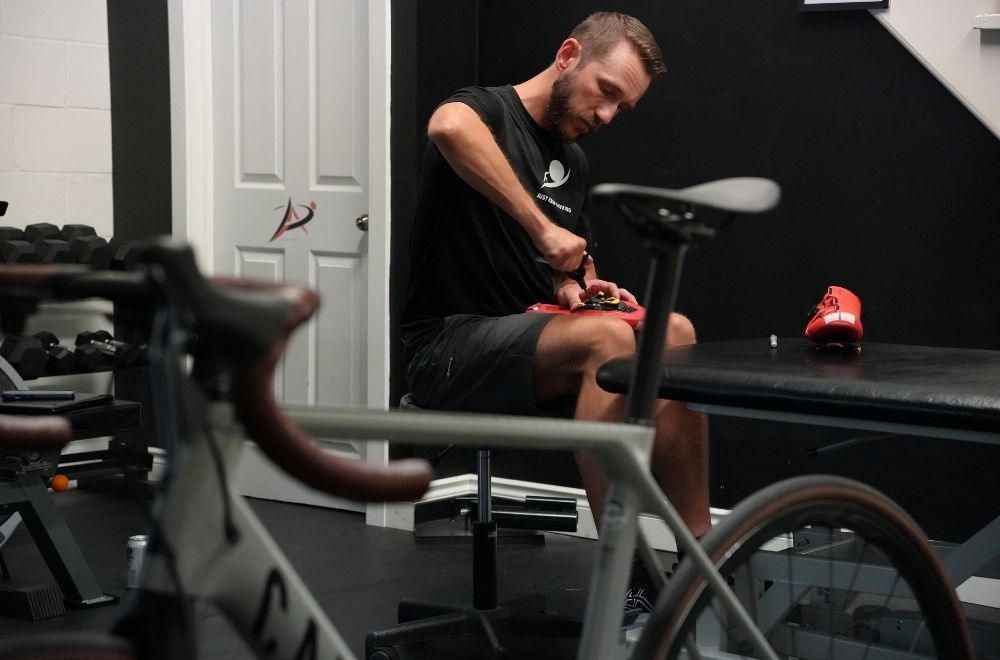
6. Foot Pain and Numbness
Cycling-related foot discomfort is usually caused by excessive pressure within the shoe which may cause pain (hot spot) and even numbness. Cyclists often experience this when their shoes are too tight or if the cleats are poorly positioned, especially when they ride for extended periods.
Prevention Strategies:
- Wear Properly Fitted Shoes:
I’ll be honest, more often than not, the cyclists I see come in with shoes that are far too narrow for their feet. Outdated notions that cycling shoes have to be tight persist heavily within the cycling community. Cycling shoes that are too narrow can excessively compress your forefoot and/or toes, leading to blisters, hot spots, and even numbness. Make sure your shoes fit well and allow for proper circulation.
- Adjust Cleat Position: If you use clipless pedals, ensure that your cleats are positioned correctly. Cleats that are too far forward can increase pressure on the balls of your feet and your toes. If you suspect this to be the case, consider moving them slightly back and then re-evaluate.
- Adjust the Cleat-Pedal Interface: Excessive pressure on one side of the foot can sometimes be alleviated with the properly placed wedges between the shoe and the cleat. However, you should delegate this task to a competent bike-fit professional.
- Specialized Insoles: While scientific support for this is essentially non-existent, it is possible that some cyclists will benefit from arch-supporting insoles. The over-the-counter options here are endless. If you choose to get fit for custom insoles (orthotics), you should get help from an orthotic provider who is aware of the needs of cyclists. There is only so much space in a cycling shoe! A standard orthotic is often too bulky for most cycling shoes.
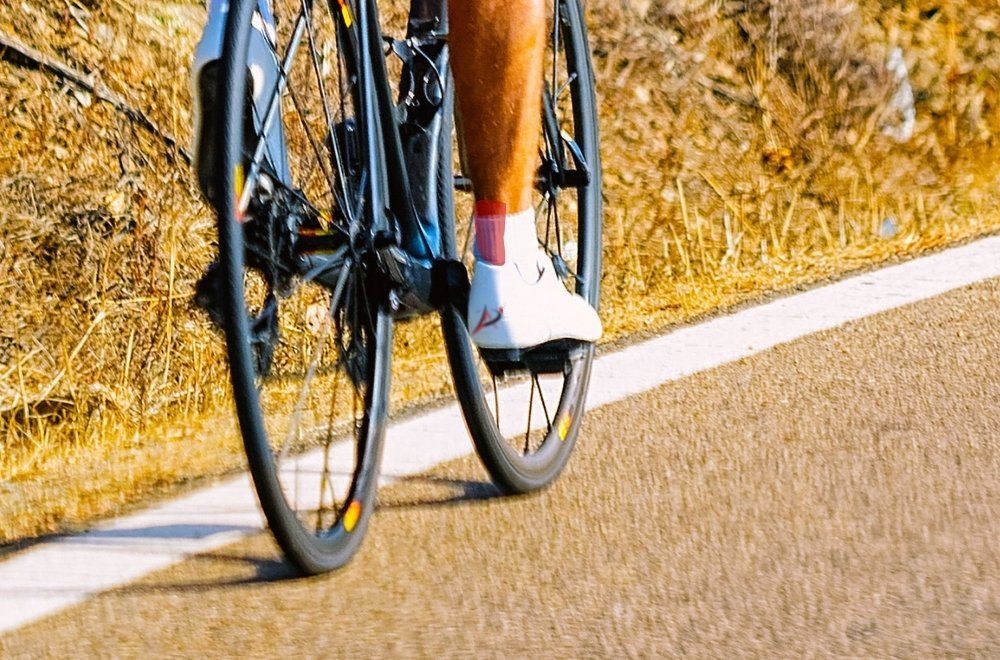
7. Achilles Tendonitis
Achilles tendonitis is an overuse injury that affects the tendon connecting the calf muscles to the heel. This condition is relatively rare in cyclists, but it can occur from time to time. When it does it is often caused by either a poor bike fit or a calf that is not up for the job (or both).
A saddle that is too high causes excessive toe-pointing, over-engagement of the calves and therefore strain in the Achilles. On the other hand, a saddle that is too low may cause excessive heel drop, consequently exposing the Achilles to increased (and repetitive) stretch, leading to pain. Another bike-fit-related cause of Achilles tendon issues is poor cleat placement.
On the other hand, we must also consider that your Achilles is simply not conditioned for the repetitive strain that cycling places on the tendon, especially if you slam the pedals! This may be particularly true if you also participate in other activities that strain the tendon, like running for example.
Prevention Strategies:
- Adjust Saddle Height: If you feel you have to excessively point your toes, or drop your heel, it's likely your saddle height needs to be adjusted.
- Adjust Cleat Placement: If your cleats look like they are slammed forward, try moving them back. Then, re-evaluate.
- Strengthening and Stretching: Strengthening your calf muscles and incorporating stretches into your routine can prevent tendonitis by improving flexibility and resilience.
Kudos to you for taking the time to educate yourself on the prevention of these, most common, cycling ailments. You have already done more than most cyclists! Sometimes applying all of this knowledge is difficult. But don’t worry, I’m here to help!
I’m Dr. Peter, and working with cyclists is my passion
In addition to my work as a sports injury specialist, I believe the best way to see the world is on two wheels or in running shoes.
I think everyone should own a bike. It is truly a sport that most people can continue well into old age - As long as they work towards preventing repetitive strain injuries.
I founded Propel Active Health & Lifestyle to help get people moving and to KEEP them moving.
Want to see how I can help you become a strong, life-long cyclist?
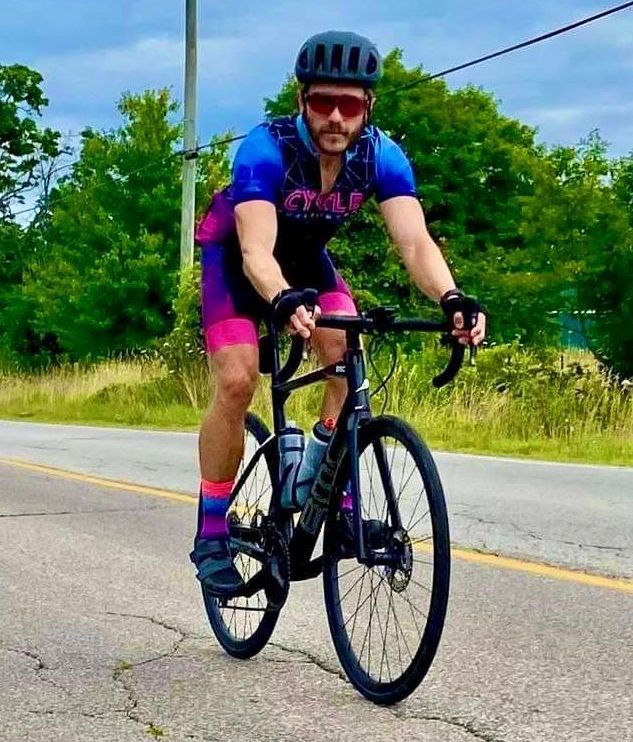
Benefits of Working with a Sports Injury Specialist
EXPERT GUIDANCE
Working with a healthcare expert who is also a runner brings a unique perspective to your healthcare/training plan
EVIDENCE-BASED APPROACH
Cut through the noise with opinions supported by available scientific evidence
EFFECTIVE MONITORING
Discover and address training errors or biomechanical deficiencies early, before injury occurs
TESTIMONIALS
"I no longer have constant lower back pain and tense shoulders!"
I felt that if I copied the settings from my previous road bike that I would be fine. I was very wrong… Dr. Peter spent 2 hours measuring and making tweaks to my bike that would provide me with a comfortable ride in the saddle. The entire process, from booking and my actual bike fitting, was smooth.
Leanne W.
"...Contemplating if you should get a bike fit, then the answer a solid YES"
I had a comprehensive bike fit with Dr. Peter today. I must say that it was such a pleasant experience... It’s
very clear that he is both knowledgeable and experienced. He took
very important factors into consideration (mobility, goals, comfort, etc) and was always happy to answer my questions, I was also given points to improve/focus on that will further contribute to my comfort on the bike.
Lemuel A.
"Will definitely be scheduling follow-up visits"
Highly recommend scheduling an appointment with Dr. Peter Lejkowski for any of the services offered but especially for any cyclists looking for a professional bike fitting. He even took the time to give me some advice with some ankle and knee pain. Incredibly thorough and detailed report provided in prompt order.
Mike R.
How it
Works
Step 1: Schedule your free telephone consultation
This is a conversation where I get to know your needs and determine what sort of service you may need
Step 2: I handle the details
We set objective goals and begin the plan to achieve them
Step 3: Worry-free execution
All you have to do is put in the work to reap the benefits
Options to Help You Reach Your Goal
- Comprehensive Injury Assessment
- Injury Management
- Comprehensive Bike Fit including all touch-point adjustments
- Rehabilitation
- Sports-Specific Strength & Conditioning
- Custom-Made Orthotics
Ready to Get Started?
Get In Touch!
